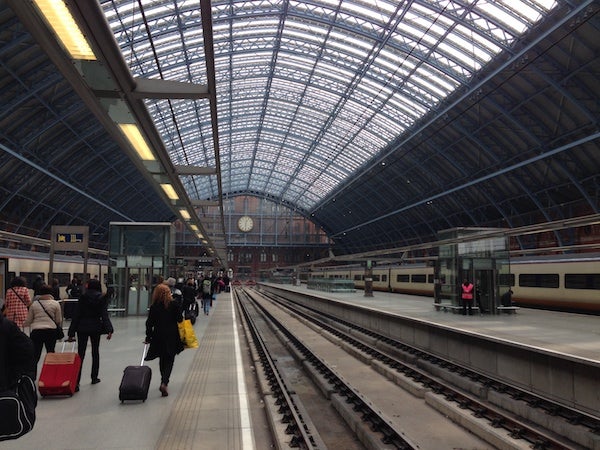This article was published in Scientific American’s former blog network and reflects the views of the author, not necessarily those of Scientific American
Passengers in Brazil opting for the train over the plane or car have seen a 27% decline in train speeds, plummeting to approximately 15 mph (24 km/h) in 2016 from 21 mpg (33 km/h) back in 2001. This can be compared with an average US train speed of 28 mph (45 km/h), not exactly impressive either when compared to the UK’s 39 mph (100 km/h), Italy’s Frecciarossa trains going up to 190 mph (300 km/h), or France’s eye-watering 199 mph (320 km/h) TGV train.
Yet, things may not be as bleak as they seem.
First of all, it turns out that there is a potential flip-side to slow passenger trains, namely that more goods are being moved by train rather than trucks. This balance is something that the US and Europe are often on different sides on: in the US, many clamor for improved passenger train services, and in Europe, experts are trying to figure out how to move goods off trucks and onto trains. Of course, not all goods are the same, as the number one item moved by trains in the US is coal (in Brazil, iron ore is equal to 74% of goods moved), albeit an on-going decline which may come to reshape the American train system as we know it.
On supporting science journalism
If you're enjoying this article, consider supporting our award-winning journalism by subscribing. By purchasing a subscription you are helping to ensure the future of impactful stories about the discoveries and ideas shaping our world today.

Modern train stations don't just shift travel from other inter-city modes, but increase overall public transit shares when well-linked within urban transport networks. Credit: Tali Trigg
Similarly, in Brazil there are more goods being shipped via train, hence the speeds are slowing down for passenger trains as they are using the same tracks. However, many will still argue that speed is the essential indicator for efficiency, so say what you will, things are getting worse or have at the very least, not improved in a long enough time.
If we look back even further, there is a nice piece by Tom Vanderbilt in Slate detailing how trains are actually slower today in the US than they were in the 1920s, and while there are some reasonable explanations for this decline, it does raise some more questions. Similarly, Michael Sivak of the University of Michigan has calculated that the fuel economy of passenger cars was 14 miles per gallon (mpg) in 1923 and just 3.2 mpg better (17.2) in 2006. Both may not necessarily equal technological regression, but they should raise some questions regarding infrastructure spending patterns (Brazil spends just 2.5% of GDP on infrastructure, a woefully low number even by BRICS standards) and (a lack of) efficiency gains.